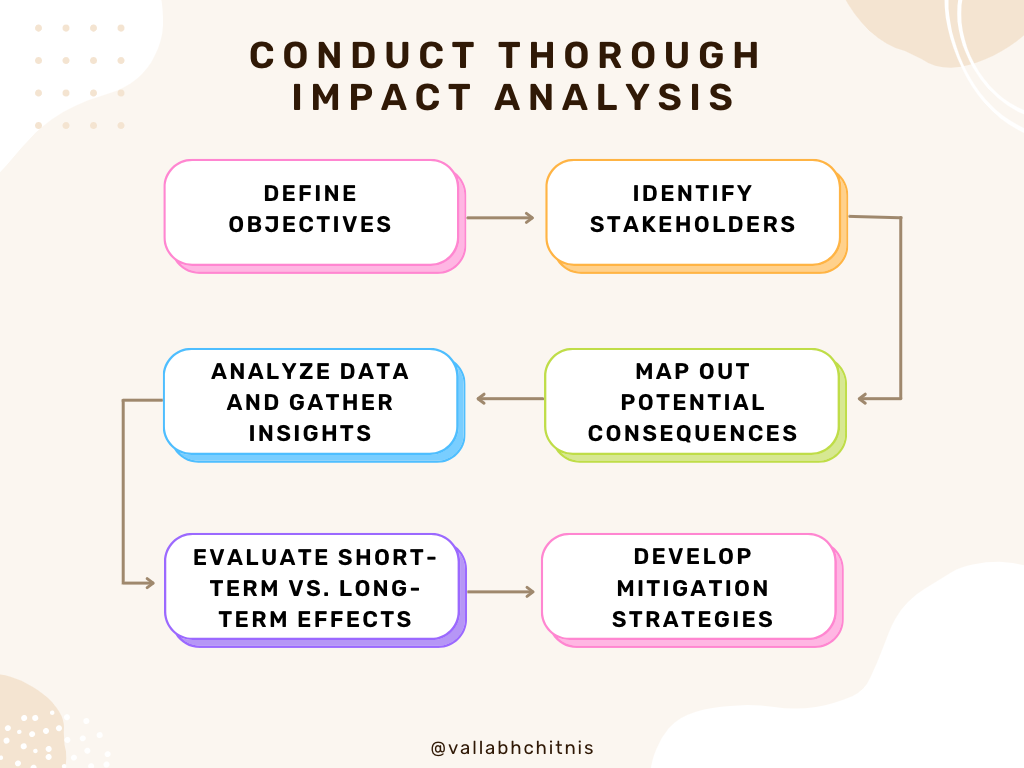The Cobra Effect describes a situation where an attempted solution to a problem makes the problem worse. The term originates from colonial India, where a cobra bounty led people to breed more cobras to collect the reward. When the government cancelled the bounty, the breeders released the cobras, worsening the problem.
Examples
YouTube’s Watch Time Algorithm: When YouTube changed its algorithm to prioritize watch time over clicks, the intention was to improve content quality. However, it led to longer, sensationalist videos that kept users watching but often degraded the overall content quality.
Facebook’s “Move Fast and Break Things”: This mantra led to rapid innovation but also significant issues with privacy breaches and misinformation spread, causing long-term damage to trust and reputation.
One key strategy to avoid this is conducting a thorough impact analysis. This empowers product managers to make adjustments in advance, mitigating the risk of unintended consequences.
Problem: Solutions are often implemented without fully understanding their potential impact. This can lead to unintended consequences, some detrimental to the product or the organization.
Conducting a thorough impact analysis is a proactive measure that helps identify potential adverse outcomes before they occur.
Steps for Conducting Impact Analysis
Define Objectives Clearly
Start by clearly defining your goal with the solution.
Example: If the goal is to increase user engagement, specify the metrics to indicate success.
Identify Stakeholders
Determine who will be affected by the solution—directly and indirectly.
Example: Include product users, developers, customer support, and other relevant parties.
Map Out Potential Consequences
Brainstorm and document all possible outcomes, both positive and negative.
Example: Consider how changes in an algorithm might affect content creators, viewers, and advertisers.
Analyze Data and Gather Insights
Use data analysis and feedback from stakeholders to understand potential impacts.
Example: Conduct A/B testing or pilot programs to gather preliminary data.
Evaluate Short-Term vs. Long-Term Effects
Assess the immediate impacts as well as potential long-term consequences.
Example: A change that boosts short-term engagement might lead to long-term dissatisfaction if it degrades content quality.
Develop Mitigation Strategies
Create plans to address any identified negative consequences.
Example: If a new feature might overwhelm users, plan for additional support and resources.

Benefits of Thorough Impact Analysis
- Prevention: Helps prevent unintended consequences by anticipating and addressing potential issues.
- Optimization: Allows for optimizing solutions for better overall outcomes.
- Stakeholder Confidence: Builds confidence among stakeholders that decisions are well-considered and balanced.
Conducting a thorough impact analysis is crucial in preventing the Cobra Effect in product management.
You can ensure that your solutions drive positive outcomes by defining objectives, identifying stakeholders, mapping out potential consequences, analyzing data, evaluating effects, and developing mitigation strategies.
Share your experiences and insights to help create more resilient product strategies.
References:
1. “The Logic of Failure” by Dietrich Dörner explores why complex problems often lead to unexpected results and how to anticipate and mitigate these issues.
2. Daniel Kahneman’s “Thinking, Fast and Slow” discusses cognitive biases that can lead to poor decision-making and how to counteract them.
#CobraEffect #ImpactAnalysis #Leadership #ProductManagement #Strategy
